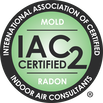Mike's Home Inspector BlogMichael Burfitt |
|
Like many in the home inspection industry, I constantly have my ear to the ground looking at new construction techniques, best practices and using my advanced data science skills to keep my knowledge up to date. One way I do this is by regularly looking over our website statistics, particularly how many hits the website gets (we are up 20% from last year!) and what are the most commonly searched terms on our website. They are, in order: #1 Termites This is by far the most popular page on my website and it’s easy to see why: it is the top search result for “Are there termites in Nova Scotia?” and termites are very destructive to wooden homes, which are pretty much all homes in Nova Scotia. While there is still no verifiable evidence of termites in our area, the blog post still stands: termites ARE coming and it’s a matter of when, not if. I do want to point out that a couple of websites have plagiarized sections of my work on this topic. I am honestly flattered and consider it a compliment that my writing on the subject is worth copying. The only thing I will point out is that there are a lot of AI written blogs on this topic that provide false information. Again, contrary to what other sources say, there are NO termites in Nova Scotia as of 2024 but plenty of other WDO (Wood destroying organisms). #2 Oil Tanks: Fiberglass vs Steel Oil furnaces are becoming less common, but they still make up a sizeable portion of my inspections: 30% of the homes I have inspected have an Oil tank, with a 50/50 split on Furnaces and Boilers. All furnaces were at minimum primarily oil powered, but boilers were divided between oil, propane and electricity as their fuel source. While I have learned a lot since I first wrote that blog post, the only thing I would change is to further clarify that every insurance company is different, and I am not privy to their individual policies. My, or any other professional’s opinion is irrelevant to when the insurance company says a tank needs to be replaced: their decision trumps all. Fun Fact: as of March 2024, the tanks I have inspected have been 71% Steel construction, 29% Fiberglass.
#3 Aluminum Wire Any Doctor will tell you to “never google your symptoms” and this advice can apply to home maintenance related items. A quick search on aluminum electrical wire will scare any new homeowner to put it mildly: it is up to 55 times more likely to burn a house down, insurers frown upon aluminum, it can come loose in the panel, it costs five figures to remove, etc. Here’s the simple truth: aluminum wire is very common, safe when professionally sized (it is usually one size bigger than copper since aluminum has higher electrical resistance) and a great choice for sending electricity a long distance with minimal losses since it is so light. Even the term aluminum is a misnomer: modern aluminum wire is an alloy, which means it has other metals mixed in. What you DO need to be concerned about is a wire known as AA-1350. Essentially, this type of wire was designed for transmission and was a poor choice to use in electrical distribution panels. What the internet doesn’t tell you is that this wire was discontinued in 1972 and rarely used past the mid-70s. It is rare for an electrical system that old to have never been inspected, repaired, or replaced by a professional electrician. Let me summarize it with some hard data from homes that I have personally inspected: % of homes that have aluminum wiring of some form: 100% % of homes that use single strand AA-1350 branch circuit wire (the bad kind): 0% There is a lot of misinformation online when it comes to home maintenance, much of it from those who have a financial incentive to push it. Part of my role as a home inspector is to both point out issues that should be further addressed by a specialist and, more importantly, point out the issues that, while on the surface appear scary, are really not a big deal and all part of routine maintenance all homeowners face. I am now entering my third year running an independent home inspection company and what a fun ride it has been! I can now confidently say that every home is different, no two homes are alike and one of the most exciting parts of being a home inspector is discovering something new. It is always fun to see a unique feature of a home and to see things that we previously have only seen during training.
However, there are some things that are the same on every inspection and while no two inspector’s skill or background is the same there are some things every inspector should know. It always comes off as a shock when I tell clients that there are zero home inspection regulations in Nova Scotia, and anyone can legally call themselves a home inspector in a week or two. Here is a sample of some questions a home inspector should be able to confidently answer after every inspection. Does This Home Have Concerning Electrical Issues? While we are not electricians, home inspectors should be able to detect most major electrical issues. They include:
What Are the Major Plumbing Materials? Most homes I inspect use copper pipe to bring service in from the street, cross-linked polyethylene (PEX) for distribution and plastic, and either ABS (black) or PVC (white) for wastewater. An inspector should be aware of materials that may or may not be a concern such as:
Does The Home Have Potential Water Infiltration Issues? There is a common phrase I use which is “water is the #1 enemy of homes” and biggest concern I get called about is moisture and the damage it has caused. A home inspector should know that water has many ways to enter a home and some of the many signs of water damage. Like many home inspectors, I use a number of tools as well as all my senses to look for signs of either active or potential water infiltration into the home. While we don't have X-ray vision and leaks can be very difficult to detect, a home inspector should be aware of the various ways unwelcome ways water can enter a home. These are just some baseline areas that all home inspectors should be able to confidently speak of. While we are generalists, not specialists we should have a strong enough knowledge to identify the majority of home defects. Your inspector should answer these three questions either verbally or in a report. According to the InterNACHI Standards of Practice, we are required to check for and report as in need of correction “the presence of solid conductor aluminum branch-circuit wiring”. Does this mean aluminum wiring in a home is dangerous? Not necessarily.
Let’s first back up to the 60s. While that timeframe might bring images of Woodstock, counterculture or political change to a home inspector a different type of change comes to mind: that of a switch from copper (CU) to aluminum (AL) wiring due to the skyrocketing cost of CU wires in the mid-1960s. Until about 1973 this type of wiring was almost exclusively used in branch circuits, which are the wires that go to individual outlets and switches. Why is this type of AL wiring a concern? There are several reasons: AL Wiring is More Malleable Another way to say this is to say it is damaged easily. As it is a softer metal, it can be nicked or damaged far easier and a more amateur installation can greatly reduce the ability of the wire to safely carry electricity (and heat). AL Wiring Expands/Contracts Easily The #1 issue with AL wires is the significantly increased fire risk. The biggest danger comes from connections can come loose that can build up heat and eventually lead to an electrical fire. AL is an Inferior Conductor Compared to CU wiring, AL is not as good of a conductor of electricity. In most cases this is not a problem as an electrician knows to account for this but amateur DIYs might not realize the size difference between CU and AL. To give you an example of what I mean, below is a sample chart of the proper types of wire to use. Remember as the gauge gets smaller the wire gets bigger. As you can see AL is one size bigger in almost all conditions. AL wiring was never discontinued or banned and is still widely used to this day. Due to its low weight, it is the preferred material for outdoor transmission lines and is frequently seen inside homes as the material the main service conductors are made of. As well, post 1973 aluminum wiring is of a much higher quality and generally does not have the safety issues just mentioned to nearly the same degree. To summarize, while widely used, AL wiring can be considered dangerous in certain circumstances, especially if installed from 1965 to 1973. A home inspector can identify if you have this type of wiring and if so, will recommend an electrician evaluate the system to see if any corrective action needs to be taken to ensure the system is safe and functional for years to come. 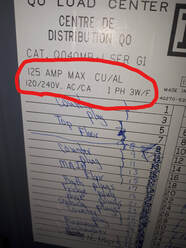 If you have ever looked at your electric panel, you might see a label similar to this. If you are like most homeowners, you have no idea what all the circled numbers and letters mean. Let us take a quick look at each one: 125 AMP MAX This is a measure of the maximum amperage rating. Simply put, this is a measure of the flow of electricity. Most modern houses have a 200-amp service although I have seen service as low as 100 amp without issue. There are systems that are smaller than 100 amp but in general, many insurance companies will not insure a home with less than 100 amp mostly due to the fact these are generally older systems and do not meet a modern family's needs. CU/AL This means that this panel can use either copper or aluminum conductors. You may have heard that aluminum wires are a major fire hazard and while that can certainly be true, there are many situations where they may be used safely. Your home inspector should be able to tell you if you have aluminum wiring and if so, whether an electrician should be consulted. 120/240V This is a measure of the voltage (pressure) this system is designed for. Well over 99% of homes in North America use what is known as a split phase system that uses two 120V service wires (120+120=240). While there are some properties that use just one 120V (mostly very old homes or cottages), I have never encountered one in the field. Fun fact: you may have heard that high voltage is very dangerous and while in most cases this is true, there are some ways that getting shocked with high voltage can be perfectly safe. Did you know that a simple static shock can deliver between 20,000 to 30,000 volts? AC/CA This is an acronym for alternating current in both English and French. I could write several essays on alternating vs direct current (DC) and why we receive power as AC yet use DC in most appliances and gadgets but, with the exception of solar systems, nearly every home receives power from the utility as AC and this is a standard designation. 1 PH This refers to the fact that this panel is designed for single phase power. To make a complex concept simple, there are two types of phasing used: single phase and three phase. Almost all homes and small businesses use single phase and three phase is used in large buildings. The way inspectors tell single from three phase power is the number of hot service wires, which brings us to our last point. 3W/F This means that is designed for 3 wires from the utility: 2 hot (usually black and red) and 1 neutral (white) wire that services the home. Three phase systems usually have an extra hot wire (any color except white or green but usually blue) and are extremely rare in homes. Still confused? Let me quickly summarize: the only thing you need to worry about as a new or existing homeowner is the amperage, which usually varies from 100 to 200 (and up) amperes. The rest is standard to nearly every home and any deviation should be investigated by an electrician. |
Archives
July 2024
Categories
All
|
|
Inside Edge Home Inspections Ltd.
Halifax, NS 902-209-9921 [email protected] Proudly Serving the HRM & Central Nova Scotia |
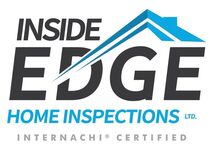
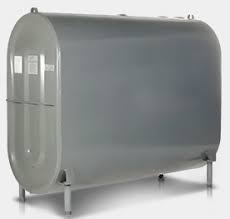
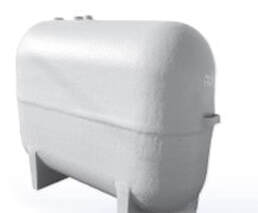
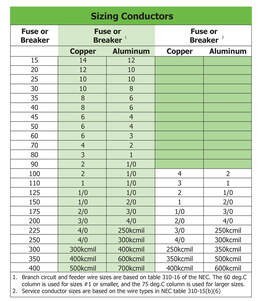
 RSS Feed
RSS Feed

